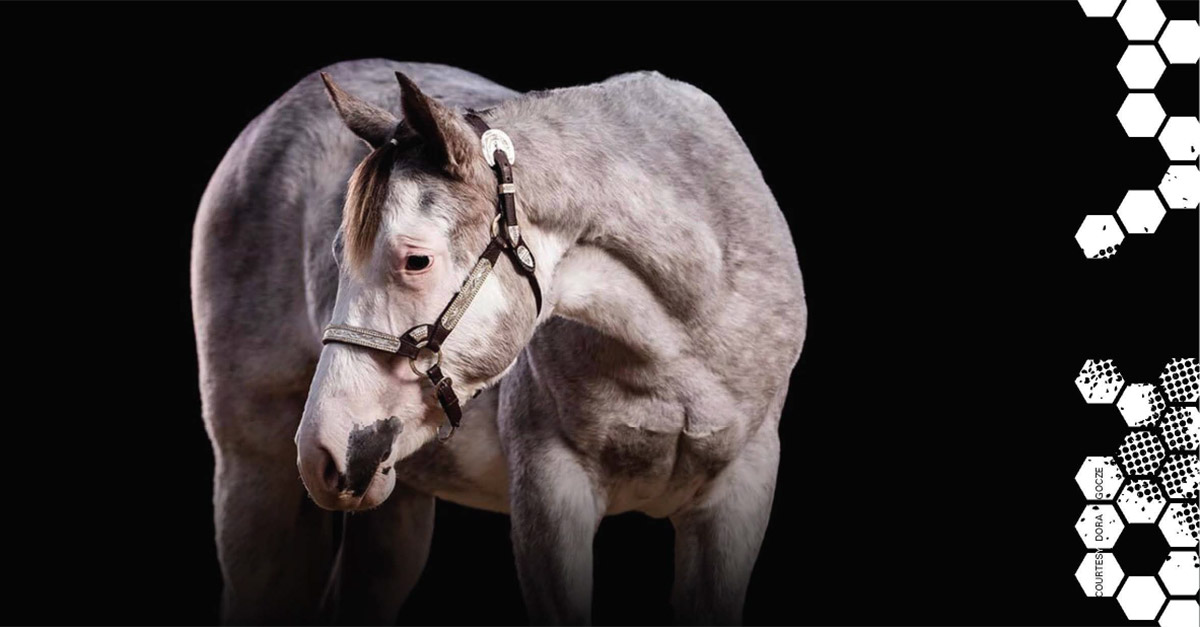You’ve had your horse genetically tested, and now you’re staring at a report card filled with alphabet soup … what does all this mean in layman’s terms anyhow?
Reading these results can seem complicated, but it’s easier than you might think as long as if you arm yourself with some basic information about the tests, how the results are reported and how they might interact on the palette that is your Paint Horse’s coat. Read on as the Paint Horse Journal helps you break down test results from APHA’s two approved testing labs in a way that’s useful to the average horse owner.
Read the Full Article “Reading Between The Lines” from the Sept/Oct 2018 Paint Horse Journal
Many genetic test results look similar to a report card—each test is like a class subject, followed by the outcome of your horse’s DNA test for that “subject.” Each test is specific for a certain condition, such as HYPP (hyperkalemic periodic paralysis) or Cream (which results in palominos, buckskins, smoky blacks and double dilutes). Each gene has two alleles, and a horse inherits one of those from each parent; so for each particular test, you’ll see a result with two parts, often separated by a slash mark. n/n means the horse is negative for the condition and does not carry the affected alleles.
Genetic Health Panel* — tests for HYPP, HERDA, GBED, MH, PSSM1 and OLWS
Recessive conditions—those like HERDA, GBED and OLWS—require two copies of a gene to affect a foal, one inherited from each parent. To sidestep these conditions 100% of the time, simply avoid breeding two carriers of a particular condition together.
Incomplete dominant conditions—like HYPP, MH and PSSM1—only require one copy to affect a horse, though animals that are homozygous for the condition are usually more severely affected. A horse’s diet and exercise management can also affect many of these conditions, for better or worse.
*The Genetic Health Panel is required for ALL breeding stallions before their foals born in 2019 & after can be registered in APHA. Mare and gelding owners can also find value in this report.
Color/Pattern Panel — tests for eight colors (Extension, Agouti, Cream, Pearl, Silver, Champagne, Gray and Dun) and nine white-spotting genes (Frame Overo, Tobiano, Sabino 1, Splash White 1/2/3 and Dominant White 5/10/20) commonly found in Paint Horses
When trying to predict a foal’s color and pattern, you’ll need to take the entire slate of color results into consideration to determine what the horse might look like—and even then, Mother Nature sometimes has funny ideas about outward expression.
Start with the horse’s base color: red, black or bay. To do this, look at the results for Extension/Red Factor and Agouti on your horse’s report. Extension is the horse’s ability to produce red and black pigment in the hair shafts; agouti is like a light switch that “restricts” black pigmentation (if present) to certain areas of the body.
Black is dominant over red—if your horse has an “E” under Extension (note the capital letter), he’s black-based. Red pigment is represented by the lowercase “e.” A red-based horse (chestnut, sorrel, palomino, red dun, etc.) will always be e/e in the Extension result—this means the horse can only produce red pigment in the hairs.
All horses have an agouti result (aa, Aa or AA), but it only comes into physical effect for black-based horses (Ee or EE). When that light switch is “on,” with at least one capital “A” present in the results, the black pigment is restricted to the points of the horse: the mane, tail, legs and ears in most cases.
Color modifying alleles—cream, pearl, silver, champagne, gray, dun and roan—each impact a horse’s base color to create vivid, eye-catching combinations like palomino, red dun, classic champagne and more. For each, at least one of the horse’s parents must carry the gene in order to contribute it to the foal.
Think of horse’s coat color and pattern genetics like a recipe—you might start out with the same base ingredients, but the addition of a “secret” ingredient or two can change the expression entirely. And in the case of white patterns, even when the recipe stays the same, sometimes the cook (Mother Nature) gets a little crazy in the kitchen and the end result is unique … but that’s why we love Paints!
When you know your horse’s genetic test results, you know what ingredients you’re working with in your “kitchen.” This might impact your management strategies, in the case of certain health conditions that can be better managed through conscientious diet and exercise, or it might impact your breeding decisions down the line. Either way, it starts with knowing your Paint from the inside out.
Purchase, renew or extend your subscription to the Paint Horse Journal for more informative articles, news and stories about the flashy breed you love!
##
[Reprinting all of part of this story is permitted, so long as credit is given to the Paint Horse Journal and a link provide back to apha.com.]
About APHA
The American Paint Horse Association is the world’s second-largest international equine breed association, registering more than a million horses in 59 nations and territories since it was founded. APHA promotes, preserves and provides meaningful experiences with Paint Horses.





